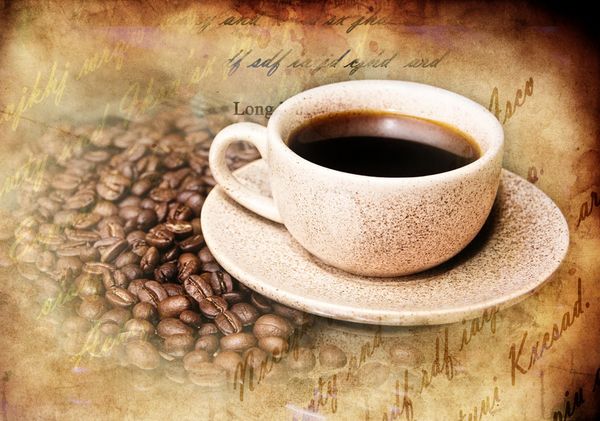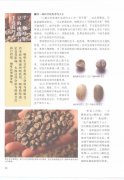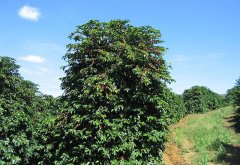Coffee knowledge the origin of coffee

origin
The origin of the coffee is unknown. One of the legends refers to coffee's origin in the plateau of Kafa Province in southwestern Ethiopia. It is said that a shepherd discovered coffee more than a thousand years ago after he discovered that sheep became very excited and lively after eating a plant. There is also a saying that a wildfire burned a coffee forest, and the aroma of barbecue coffee attracted the attention of surrounding residents. The fruit of this plant was first chewed to refresh the people, and later baked and ground to make bread mixed with flour as a food for warriors to enhance their courage in battle. However, these legends lack historical documents to support them, and only appear in later travel biographies. It is impossible to investigate the true origin of coffee.
It wasn't until around the 11th century that people started brewing coffee as a drink. In the 13th century, Ethiopian troops invaded Yemen, bringing coffee to the Arab world. Because Islam prohibits believers from drinking alcohol, some religious people think this drink stimulates nerves and violates the doctrine, and once banned and closed coffee shops, but Egypt's Sultan thinks coffee does not violate the doctrine, so the ban is lifted, coffee drinks quickly spread in Arab regions. The word Coffee comes from the Arabic Qahwa, meaning "vegetable drink", which later spread to Turkey and became the origin of the word in European languages. Coffee cultivation and production methods have also been continuously improved and gradually perfected by Arabs.
However, before the 15th century AD, coffee was monopolized by the Arab world for a long time, and it was only circulated among Muslim countries; at that time, it was mainly used in medicine and religion. Muslim doctors and monks recognized coffee as refreshing, refreshing, strengthening, and hemostatic; the use of coffee began to be documented in the early 15th century, and it was integrated into religious ceremonies during this period. Because alcohol was forbidden in the Muslim world, coffee became an important social drink at the time.
Until the 16th and 17th centuries, coffee was introduced to Europe through the trading of Venetian merchants and maritime hegemony Dutch. Soon, this black drink full of oriental mystery and fragrant aroma was competed for by the aristocratic gentry class. The price of coffee also rose, and even the title of "black gold" was produced. In the following turbulent era of navigation, through the spread of shipping, The whole world is included in the map of coffee production and consumption.

Composition of Coffee
Caffeine: has a particularly strong bitter taste and stimulates the central nervous system, heart and respiratory system. Moderate caffeine can also reduce muscle fatigue and promote digestive secretion. Because it promotes kidney function, it has a diuretic effect and helps the body expel excess sodium ions from the body. Too much caffeine can lead to caffeine poisoning.
Tannin: Boiled tannins break down into pyrochloric acid, so coffee brewed too long will taste worse.
Fats: The most important of these are acidic fats and volatile fats.
Acidic fat: That is, fat contains acid, its strength will vary depending on the type of coffee.
Volatile fat: It is the main source of coffee aroma and emits about forty aromatic substances.
Protein: A major source of calories, but not a high percentage. Coffee powder protein in brewing coffee, most will not dissolve out, so intake is limited.
Sugar: Coffee beans contain about 8% sugar, most of which will be converted into caramel after roasting, making coffee brown and sweet with tannins.
Fiber: The fibers of the raw beans are carbonized after roasting and combine with caramel to form the hue of coffee.
Minerals: contains a small amount of lime, iron, phosphorus, sodium carbonate and so on.
Important Notice :
前街咖啡 FrontStreet Coffee has moved to new addredd:
FrontStreet Coffee Address: 315,Donghua East Road,GuangZhou
Tel:020 38364473
- Prev

The basics of coffee beans The selection of coffee beans and hand selection skills
- Next

Coffee knowledge from Coffee Tree to Coffee
Coffee trees grow coffee as perennial evergreen shrubs or small trees of Rubiaceae. It is a horticultural perennial cash crop with the characteristics of fast growth, high yield, high value and wide market. Wild coffee trees can grow to a height of 5 to 10 meters, but coffee trees planted on the manor are often cut to less than 2 meters in order to increase their fruit and facilitate harvesting. The first opening of a coffee tree
Related
- Beginners will see the "Coffee pull flower" guide!
- What is the difference between ice blog purified milk and ordinary milk coffee?
- Why is the Philippines the largest producer of crops in Liberia?
- For coffee extraction, should the fine powder be retained?
- How does extracted espresso fill pressed powder? How much strength does it take to press the powder?
- How to make jasmine cold extract coffee? Is the jasmine + latte good?
- Will this little toy really make the coffee taste better? How does Lily Drip affect coffee extraction?
- Will the action of slapping the filter cup also affect coffee extraction?
- What's the difference between powder-to-water ratio and powder-to-liquid ratio?
- What is the Ethiopian local species? What does it have to do with Heirloom native species?

